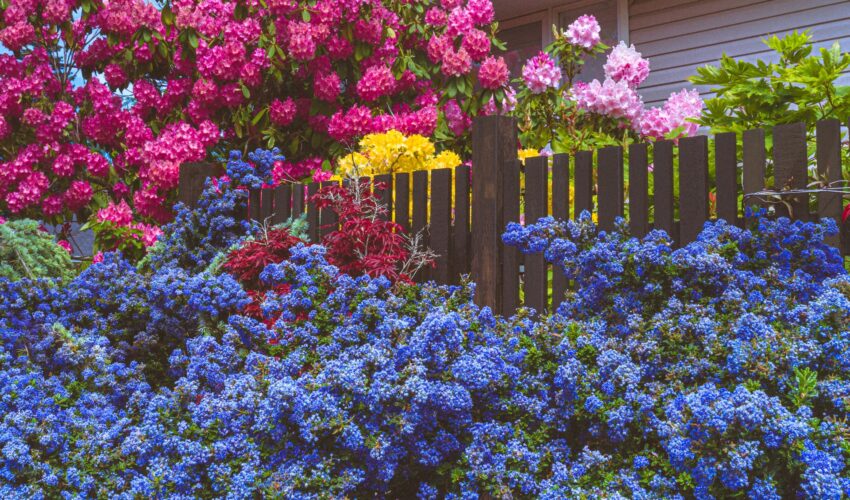If spring’s arrival has you planning some changes to your landscaping, you’re not alone! This can be the best time of year to get a fresh start on your outdoor living area. But before getting started, it’s important to consider how your landscaping choices could impact the efficiency and lifespan of your HVAC unit. Below we explain what to consider while designing an HVAC-friendly outdoor space.
Flowers and Plants Around Your HVAC Unit
When it comes to your HVAC system, one rule is paramount: plants, vines, or other vegetation should never be growing into your unit. It’s also a good idea to weed the area around your HVAC unit; since the fan on top of the HVAC unit pulls air through the coil, any organic matter that blocks the fan or the vents can restrict airflow and cause your unit to work harder than necessary.
Keep at least two to three feet of distance between your HVAC unit and any plants, and consider leaving room for growth. Certain medium-to-tall shrubs or trees may actually increase efficiency by shading your unit, but both small flowers and large shrubs can cause problems when they infringe on your HVAC unit’s space.
Finally, it’s important to remember that your unit must be accessible to HVAC technicians. If in need of service, anything you plant around your HVAC unit may be stepped on, so it’s best to create a path before planting fragile or ornamental flowers near the unit. And while it’s fine to plant bushes or trees as a windbreak, if they’re fully blocking the unit, a technician may cut or remove them to gain access.
Fences, Trellises, and Other Ways to Hide Your Unit
Using a trellis, lattice, or fence to hide your HVAC unit is permissible—as long as it doesn’t block airflow and the unit is still accessible. Technicians should be able to get to the unit while carrying tools, and there should be enough space around the unit for them to move around.
Sand, Soil, Gravel, or Mulch—Does It Matter?
When it comes to your unit’s efficiency, it generally doesn’t matter whether sand, soil, or gravel surrounds it. However, if your HVAC unit sits on an incline and the earth beneath it is loose, the slab under the unit may begin to sink, causing the unit to no longer be level. Having a non-level HVAC unit can strain or damage the compressor, shortening the unit’s lifespan and preventing it from cooling the air in your home. By carefully landscaping the area around your HVAC unit instead, you’ll be able to avoid erosion and keep your unit level.
In Conclusion
By considering your HVAC unit and the technicians that may work on it, you can landscape your yard with style, functionality, and efficiency in mind. Give Northeast Air Conditioning, Heating & Plumbing a call to answer your questions and solve your HVAC system issues before beginning your spring landscaping project.
Header Photo by Kier In Sight on Unsplash


